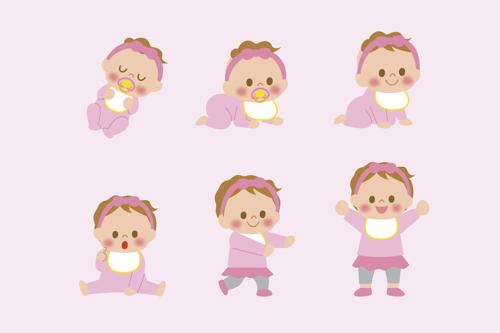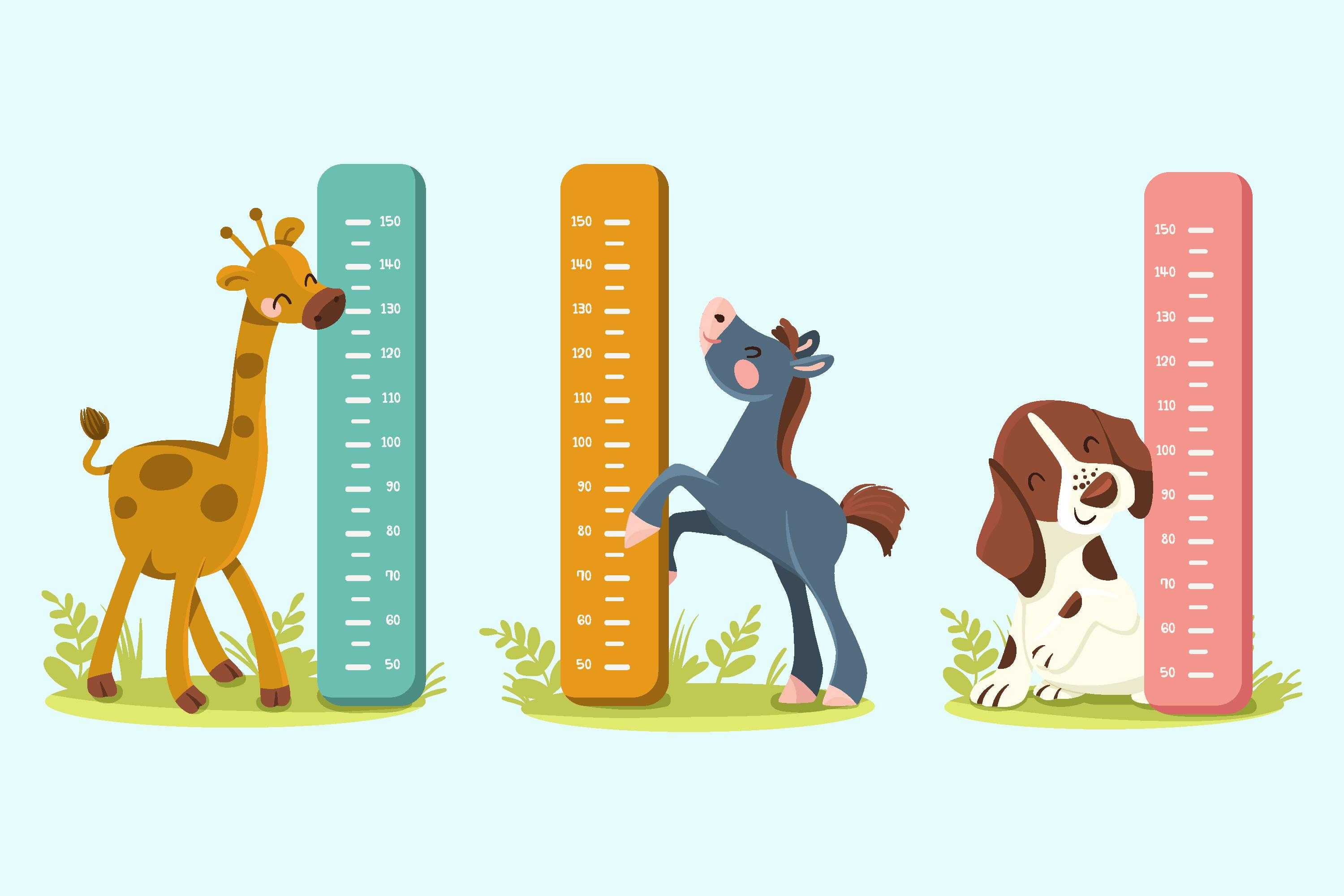As parents, we all want the best for our children. Ensuring that they grow and develop properly is one of our top priorities. One tool that healthcare professionals use to monitor a child's growth is the growth chart. The World Health Organization (WHO) has created a recommended growth chart for kids that is widely used and recognized. In this blog post, we'll explore what the WHO growth chart is, why it matters, and how to use it.
WHO Child Growth Chart for Boys (0-12 Months)

| Chart For Baby Boy 0-12 Months | ||||||
| Age (Months) | Weight Range (kg) | Weight Range (lbs) | Length Range (cm) | Length Range (in) | Head Circumference Range (cm) | Head Circumference Range (in) |
|---|---|---|---|---|---|---|
| 0 | 2.6 - 4.5 | 5.7 - 9.9 | 45.6 - 55.2 | 18.0 - 21.7 | 31.5 - 36.5 | 12.4 - 14.4 |
| 1 | 3.3 - 6.0 | 7.3 - 13.2 | 49.1 - 59.7 | 19.3 - 23.5 | 33.5 - 38.5 | 13.2 - 15.2 |
| 2 | 4.0 - 7.2 | 8.8 - 15.9 | 52.0 - 63.6 | 20.5 - 25.0 | 34.5 - 39.5 | 13.6 - 15.6 |
| 3 | 4.5 - 8.1 | 9.9 - 17.8 | 54.5 - 66.9 | 21.5 - 26.3 | 35.5 - 40.5 | 14.0 - 15.9 |
| 4 | 5.0 - 8.9 | 11.0 - 19.6 | 56.7 - 69.7 | 22.3 - 27.4 | 36.5 - 41.5 | 14.4 - 16.3 |
| 5 | 5.4 - 9.6 | 11.9 - 21.2 | 58.6 - 72.2 | 23.1 - 28.4 | 37.5 - 42.5 | 14.8 - 16.7 |
| 6 | 5.7 - 10.2 | 12.6 - 22.5 | 60.4 - 74.5 | 23.8 - 29.3 | 38.0 - 43.5 | 15.0 - 17.1 |
| 7 | 6.0 - 10.8 | 13.2 - 23.8 | 62.0 - 76.7 | 24.4 - 30.2 | 38.5 - 44.0 | 15.2 - 17.3 |
| 8 | 6.3 - 11.3 | 13.9 - 24.9 | 63.6 - 78.8 | 25.0 - 31.0 | 39.0 - 44.5 | 15.4 - 17.5 |
| 9 | 6.6 - 11.8 | 14.6 - 25.9 | 65.1 - 80.8 | 25.6 - 31.8 | 39.5 - 45.0 | 15.6 - 17.7 |
| 10 | 6.9 - 12.4 | 15.2 - 27.3 | 66.5 - 82.7 | 26.2 - 32.6 | 40.0 - 45.0 | 15.7 - 17.7 |
| 11 | 7.2 - 12.9 | 15.9 - 28.5 | 68.0 - 84.6 | 26.8 - 33.3 | 40.5 - 45.5 | 15.9 - 17.9 |
| 12 | 7.5 - 13.4 | 16.5 - 29.6 | 69.5 - 86.4 | 27.4 - 34.0 | 41.0 - 46.0 | 16.1 - 18.1 |
WHO Child Growth Chart for Baby Girl (0-12 Months)

| Chart For Baby Girl 0-12 Months | ||||||
| Age (Months) | Weight Range (kg) | Weight Range (lbs) | Length Range (cm) | Length Range (in) | Head Circumference Range (cm) | Head Circumference Range (in) |
|---|---|---|---|---|---|---|
| 0 | 2.5 - 4.8 | 5.5 - 10.6 | 45.5 - 54.9 | 17.9 - 21.6 | 31.5 - 37.0 | 12.4 - 14.6 |
| 1 | 3.2 - 5.8 | 7.1 - 12.8 | 49.9 - 59.0 | 19.6 - 23.2 | 33.5 - 39.0 | 13.2 - 15.4 |
| 2 | 3.9 - 6.7 | 8.6 - 14.8 | 53.2 - 63.1 | 20.9 - 24.8 | 35.0 - 40.5 | 13.8 - 15.9 |
| 3 | 4.4 - 7.6 | 9.7 - 16.8 | 55.8 - 66.5 | 22.0 - 26.2 | 36.0 - 41.5 | 14.2 - 16.3 |
| 4 | 4.9 - 8.4 | 10.8 - 18.5 | 58.0 - 69.9 | 22.8 - 27.5 | 37.0 - 42.5 | 14.6 - 16.7 |
| 5 | 5.3 - 9.2 | 11.7 - 20.3 | 59.9 - 72.9 | 23.6 - 28.7 | 37.5 - 43.5 | 14.8 - 17.1 |
| 6 | 5.6 - 9.9 | 12.3 - 21.8 | 61.6 - 75.7 | 24.3 - 29.8 | 38.0 - 44.0 | 15.0 - 17.3 |
| 7 | 6.0 - 10.6 | 13.2 - 23.4 | 63.2 - 78.4 | 24.9 - 30.9 | 38.5 - 44.5 | 15.2 - 17.5 |
| 8 | 6.3 - 11.2 | 13.9 - 24.7 | 64.7 - 80.9 | 25.5 - 31.9 | 39.0 - 45.0 | 15.4 - 17.7 |
| 9 | 6.6 - 11.8 | 14.6 - 25.9 | 66.2 - 83.3 | 26.1 - 32.8 | 39.5 - 45.5 | 15.6 - 17.9 |
| 10 | 6.9 - 12.4 | 15.2 - 27.3 | 67.7 - 85.7 | 26.6 - 33.7 | 40.0 - 46.0 | 15.7 - 18.1 |
| 11 | 7.2 - 12.9 | 15.9 - 28.5 | 68.9 - 87.8 | 27.1 - 34.6 | 40.5 - 46.5 | 15.9 - 18.3 |
| 12 | 7.5 - 13.3 | 16.5 - 29.3 | 70.0 - 90.0 | 27.6 - 35.4 | 41.0 - 47.0 | 16.1 - 18.5 |
Why is the WHO Growth Chart Important?
The WHO growth chart is a standardized tool used by healthcare professionals to monitor a child's growth and development. It is based on data collected from healthy, breastfed infants and young children from six different countries around the world. This means that it reflects the growth patterns of children who are developing typically.
The WHO growth chart is important for several reasons:
-
Identifying Growth Problems: The growth chart can help identify growth problems early on, such as slow growth or a plateau in growth. This can be a sign of underlying health issues that need to be addressed.
-
Tracking Progress: The growth chart allows healthcare professionals to track a child's growth over time. This can help identify trends or patterns that could indicate a potential problem.
-
Comparing Growth: The growth chart provides a standardized way to compare a child's growth to other children of the same age and sex. This can help identify if a child is growing at a healthy rate.
How to Use the WHO Growth Chart
-
Measure Your Child's Height, Weight, and Head Circumference: To use the growth chart, you'll need to know your child's current height, weight, and head circumference. Use a reliable measuring tool, such as a pediatric scale or a measuring tape, to get accurate measurements.
-
Find Your Child's Age: Look for your child's age in months on the left side of the growth chart.
-
Plot Your Child's Measurements: Using a pen or pencil, plot your child's height, weight, and head circumference on the appropriate lines on the growth chart. Each measurement should be plotted on the corresponding line for your child's age.
-
Interpret the Results: Once you've plotted your child's measurements, you can interpret the results. If your child's measurements fall within the range of the curved lines on the growth chart, this is considered normal growth. If your child's measurements fall outside of the curved lines, this could indicate a potential problem and should be discussed with a healthcare professional.
-
Monitor Your Child's Growth Over Time: As your child grows, continue to use the growth chart to monitor their growth and development. Plotting their measurements over time can help identify any trends or patterns in their growth.
It's important to note that while the WHO growth chart is a useful tool, it should not be used as the only indicator of a child's health. Healthcare professionals will use a variety of tools and assessments to monitor a child's overall health and development.
Discover More
Most Viewed
Christmas is a season of joy, love, and traditions. And what better way to get into the holiday spirit than through timeless carols? These musical gems have been bringing people together for generations. Here’s our ranked list of the Top 10 Christmas Caro…
Read More
















